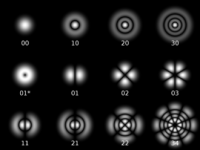I delete those comments that bothered you from my post, toning them down.
I pushed it a little because we get a lot of new members who troll the forum asking the same question repeatedly over and over.
I spent a lot of time putting links together for you with several different explainations from several places about multi and single mode and thought maybe the guy is trolling and not reading any of it.
Maybe I gave you way too much detailed information trying to give an understanding of reasons which are a complicated bunch of concepts rather than saying single mode has a better beam quality and is lower in power than multimide. Anyway keep reading a studying it is a lot to take in in one fell swoop. Many concept involved to really understand. Is really a huge area of study.
At the end of the day with diodes it is the characteristics of the emitter that determine if it can run as a single mode or a multimode--size and shape + output power related to same.
Single emitters have a single emitting region (Emitter) that emits light. They can be multimode or single mode depending on the emitter size. Basically small edge-emitting LDs generate between a few milliwatts and up to roughly half a watt of output power in a beam with high beam quality--and round dot. Low-power diodes normally have a rather high beam quality, whereas high-power laser diodes basically always have a poor beam quality.
As mentioned in the RP Photonics laser 101 link above:
Single mode diodes typically have an emitter that is approximately 3µm - 7µm x 1µm, dependent on the wavelength. The emitter allows only a single mode to propagate along the active region.
Multimode diodes have the emitter width enlarged to allow multiple modes in the active region. The emitters can be 30µm - 300µm x ~1µm
DPSS laser are a whole other ballgame are more complicated and can have all sorts of problems of their own not related to laser diodes problems. See about the many TEM modes and mode hoping here: TEM00 is the round dot Gaussian beam goal.
View attachment 71658
Diodes boil down to as Lifetime17 said above : "Single modes are of lower power but produce a nice dot. To were as Multi mode diodes are of higher power and produce a rectangular spot."
Anyway good luck. Search the forums database Search --a lot of answers to be fornd there.
Thank you! Good info. Yes it’s a lot to take in and I’ve saved all of the links and posts so I can do some reading and letting it all sink in. Going down the laser rabbit hole!
I’ve had them off and on for years but never really dove in. Just having fun with them. The first one I had was when I was a kid in the 80’s. It was about the size of a brick. About 12” long. Plugged into the wall. Red dot. Probably 1mw. But still amazing back then. This was when there was a Lazarium in Griffith park and they’d do shows to Pink Floyd.




